Havana, Cuba
- Peter Antonucci

- Sep 23
- 10 min read
Wednesday | November 15, 2017
We began the day early as we had a full day of activities ahead of us. I began a bit earlier than most, as is usually the case. I went to the top floor of our hotel and took a walk around, enjoying all the morning vistas.



I even had the opportunity to wolf down an amazing breakfast – and this was before the omelet or pastries!

The morning began on foot, and the weather was gloriously cooperative. We headed out to Old Havana. We wandered through the Plaza de Armas, a scenic tree-lined plaza formerly at the center of influence in Cuba. Old Havana is home to approximately 100,000 residents. In essence, there really are two sides to old Havana – the old, renovated side and the newer part that is obviously undergoing incredible restoration. A few years ago, there was only one serviceable hotel in the area. The goal now is to renovate buildings so there will be 21 hotels. But when one of the developers approached Fidel Castro to propose this deal, he explained that the revenue from the hotels had to stay in old Havana and could not escheat to the Cuban coffers. Surprisingly, Castro agreed and the construction began.
As we strolled, I couldn’t help but notice the beautiful, old and ornate buildings that were ubiquitous in this town.


School children played happily. (Of course, in the United States, if I were caught photographing young schoolgirls, one would probably report me to the police.)

Our guide, David, explained his theory of why the United States was maintaining its embargo on Cuba. Last year, the country of Cuba made $83 million dollars in tourist revenue whereas Miami realized $640 million dollars in tourist revenue (a number I believe to be extermely low). If Cuba is successful in restoring its old culture, tourism will increase and it is likely those dollars will come from tourism otherwise destined for Miami or Key West.
We drove by the old Bacardi house, founded in 1871.


During the brief time the British possessed Cuba, they built this fort, and its attendant walls, across the bay.

We walked through several squares in town.



Here, we stopped at the Governor’s house, built by the Antonelli family. It was constructed in 1558, and served as the residence for the governor until 1774.

In this rather typical building, six people lived as owners and the family, but they kept 120 slaves imprisoned in the same building.

Sometimes, it seemed like every other human person we heard about “started the revolution.” This statue belongs to Cespedes, who started the revolution on October 10, 1868.

Statues were abundant in this particular square.


This is St. Francis Square, which became home to the monks in 1557. This particular church was erected in 1558.

Before that time– from 1511 to 1557 – this was the area used to stage the provision of goods to ships. For example, at this site, dozens of crates of rice and beans would be delivered to ships stopping in the nearby harbor. From that point on, the church ceased such shipments of provisions.
Slavery is reputed to have ended in Cuban in 1878. That being said, there appear to be stories discussing the import of people from Africa and China even beyond that date.
The last square was built in 1774.
The Cathedral de Havana was also constructed in 1774. It is a quintessentially Tuscan Cathedral as defined by the two different towers. Complementing the towers is a marvelous Baroque design.



I noticed a monastery and asked David some questions about the Catholic religion here. He explained that only 10% of the Cuban population is Roman Catholic. He also agreed with what someone told us before today, namely that Santaria is widely practiced in Cuba even today, and that is largely because of their African forefathers.
So the town squares we visited today include the Plaza de San Francisco. This particular Plaza is dominated by the Baroque Iglesia and Convento do San Francisco, dating from 1719. And we walked through the Plaza Vieja, surrounded by the sumptuous houses of the Havana aristocracy from the 18th and 19th centuries.
We noticed a few cranes around the town and we asked David about the state of building and renovating old Havana. He explained that one crane has remained in place for 25 years, so we should not get too excited about that particular job site.
We took a walk into the bottom floor of this house. It certainly does not rival one of Manhattan's Upper East Side townhouses.



In New York, this might house four families. But here it is home to 110 people and was built in the 1690s. It doesn’t just need to be renovated, it needs to be totally gutted and rebuilt. But it is difficult to relocate so many people for such a long period of time.
It is interesting to note that every bedroom has its own electrical meter. And that is because each bedroom is a deeded property and the inhabitants of that apartment actually own that land.
When we walked into a ration store, David explained the effect of the United States' embargo on Cuba.


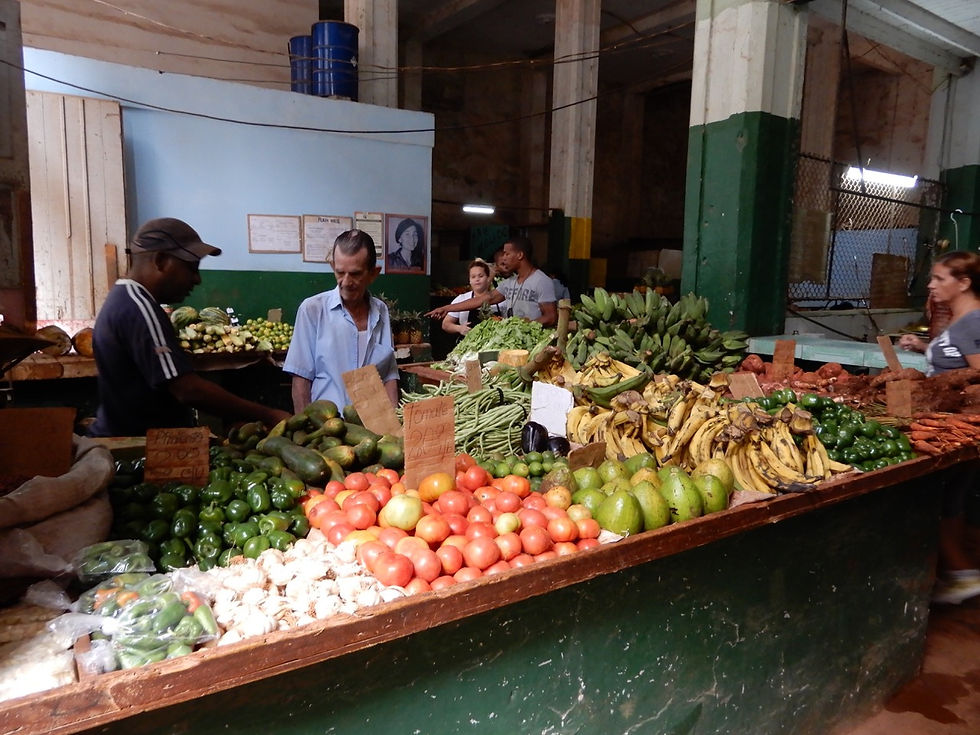
Instead of being able to import high-quality flour from Virginia or the United States generally, Cuba is required to import flour from China. That flour usually arrives somewhat damp and, as result, all the rolls here are soft and squishy. One would be hard pressed – or it would be impossible - to find an Italian hero or French baguette.

I asked David if alcoholism is a problem here and he replied in the affirmative. Over age 40, people tend to drink much of the day, including morning rum. From our travels throughout the world, we are can be aware of the effect of alcoholism on society, especially when it is widespread, see, eg., Alaska, Russia, etc.
We were tired and in need of a manicure, but with this being the one selection, we took a pass.

Next, we embarked on an architectural tour in which one of Cuba’s most renowned architects led us on a journey through Havana's rich history. We began with the 18th-century El Moro Castle, the Capitolio, and the Gran Teatro. Then we explored the Mafia era hotels, Riviera and Nacional (hideouts for Meyer Lansky, Lucky Luciano, Al Capone and Jimmy Hoffa) before exploring the revolutionary landmarks of Havana University and Revolutionary Square.
“Mother Havana” is the phrase our architectural tour guide used to refer to Old Havana. We drove through the Forbidden City, as he called it, comparing it to Beijing. In the old part of town, the buildings appear to be all brownstones with common walls and no greenery.
He took us to a building, built in 1926, that used to be a private residence. The architect's focus was trying to make the building appear modern, notwithstanding the constraints that existed in Cuba at that time. To that end, there was no chandelier, but all illumination came through Lalique glass. The intriguing dark wood was all Cuban mahogany.


I didn’t care for it much at all. Trying to be something it wasn’t, the building was caught between the old world tradition of Cuba and trying to break out into more of an art deco setting.
We found our way into this synagogue that was built in 1955.


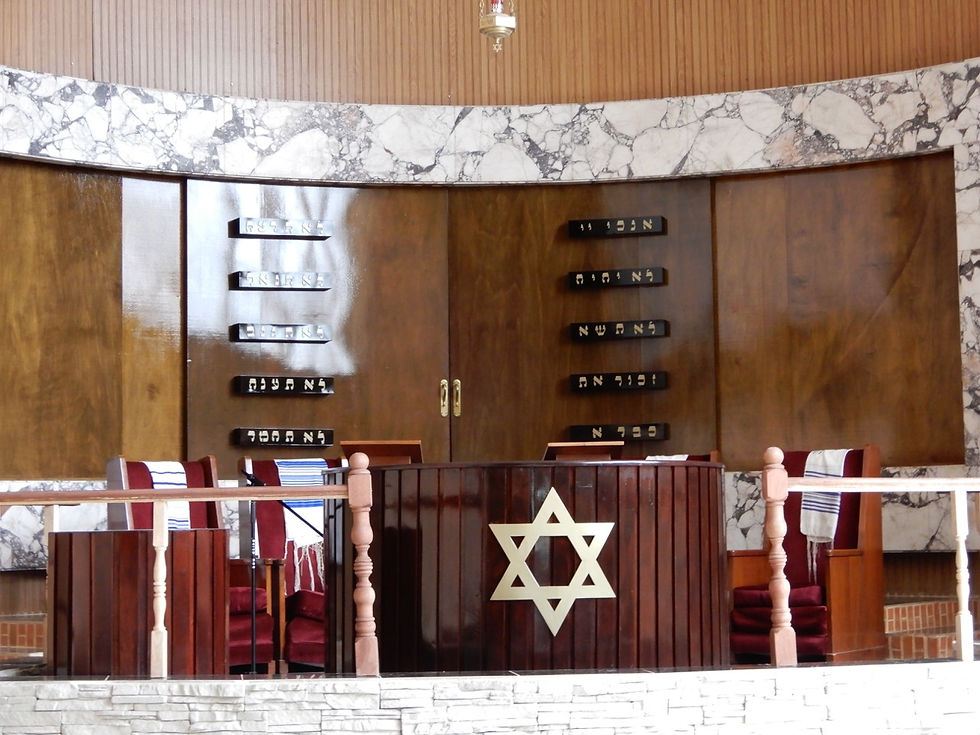
Then, there were 15,000 Jews in the city but now there are only 1500. The woman from the synagogue explained to us to do has never been a history of anti-Semitism in Cuba and that: “We have no more ghettos. Jews can go anywhere they like now.”
In the bus, Davis provided a good explanation about Cuban housing laws. In 1960, the government passed an urban housing law that gave property rights to individuals. But, the government technically still owns the buildings. Tenants are required to pay rent to the government. But there are no evictions. Just imagine how excited a tenant would be submit a rent check when there’s no threat of eviction if he didn't send that check. On the other hand, the tenant is free to bequeath or gift to the property to anyone he pleases.
Interestingly, the Cuban population is an aging one, with 25% of all Cubanos being over 60 years old. David pointed out something that we had not focused on – the whole time we were in Cuba, we never saw a pregnant woman.
Here, we passed by the US Embassy.

In days gone by, they used to have large screen televisions looking out over the Plaza promoting democracy and freedom. In response, the Cuban government erected 168 flagpoles in front of the embassy to cover the screens.
Lunch was at an interesting place called Paladar Atelier.
Equally known for its atmosphere and it exquisite cuisine, this particular restaurant boasted wonderful lighting textures. It was home to a pre-revolutionary senator. “Cuba libre” is the drink everyone imbibes here. Simply, it is rum and Coke.
But speaking of atmosphere, these welcoming toilets - now covered into planters - were not exactly appetizing.

After lunch, it was time to visit three private galleries for discussions with the artists over cocktails and snacks. Frankly, we were all exhausted, so we convinced David to reduce it to only two galleries. The first one, the Merger Gallery, was unique. It is a collaborative studio of three young Cuban artists, Mario Gonzalez, Niels Moliero and Alain Pino. Most of the pieces are made up of at least to medium and no single artist has his or her name on the piece. Rather, they are all signed “The Merger.” Some of these pieces were amazing.




This cityscape in a wheelbarrow was priced at $75,000. I was going to try to buy it for $40 less: I could even offer to pick up my own True Temper Hardware wheelbarrow when I got home! Nah, not worth it.

Next was a studio owned and operated by Frank, Adrian, and Alex, three up-and-coming artists who are interested the growing arts scene in Cuba and graduated from art school together recently. They are trying to mix their training and talents with their business skills to create profitable enterprises for themselves and other young artists in Havana. I first walked in saw this painting, priced at $7000.

But then upstairs, they had this painting, also for $7000.

Considering the fractional division of votes between these two candidates during the last election, I guess equal pricing is only fair.
And of course, one cannot have a day in Havana without exposure to classic cars.







Finally, it was off to a rum and cigar tasting event at Café Madrigal.

There, we got election from a local cigar expert about the cigar making process.
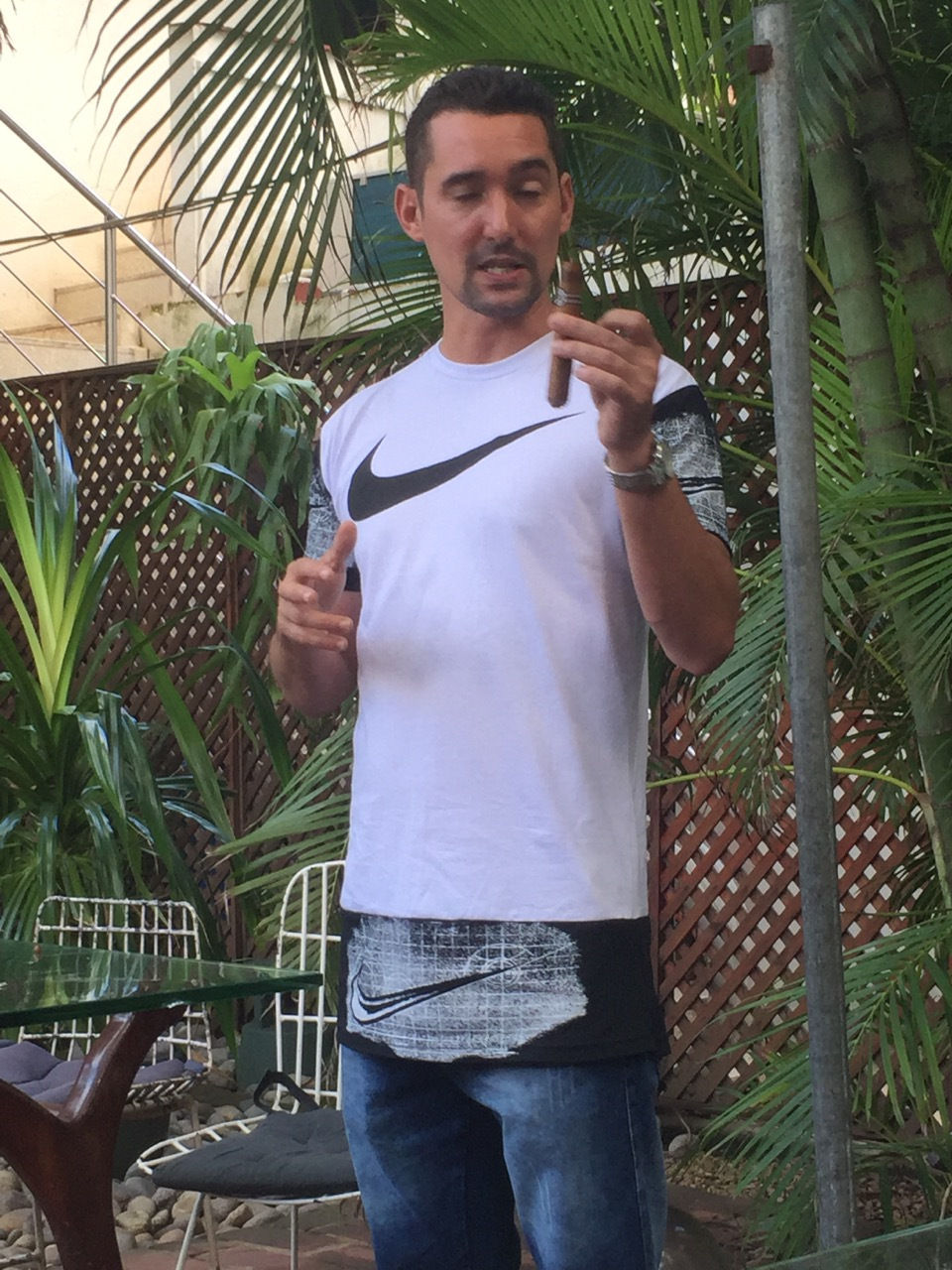
This particular guy works in a factory with 300 workers and they turn out the approximately 15,000 cigars a day. The average cigar maker produces around 80 to 140 cigars a day. Although the cigars must be top quality, the rollers are rewarded if they make more than their quota for the day.
There are approximately 27 brands of 200 different types of cigars in Cuba. The thicker the cigar, usually the milder the taste. All the leaves in the cigar are placed in one direction to facilitate burn into that direction. There are five types of leaves in each cigar. The outside leaf is used as the wrapper and that is derived from the leaf of the tobacco plant that is highest on the plant, with greatest exposure to the sun. The four types of tobacco leaves used inside a cigar provide strength, aroma, combustion, and binder. The binder comes from the lowest leaves on the tobacco plant, with least exposure to the sun.
Tobacco leaves are aged an average of three years but the best ones can be aged up to five years. He also explained exactly how to cut, light and smoke a cigar. He cautioned that if one inhales a cigar, one may get the sensation of being drunk.
Yes, some people, especially those who have never smoked a cigar before, “suck it in” as our friend advised,” and then pass out!
Others maintain their cool.

Next on our list, and it is something we added ourselves, was a visit to a store that sold wholesale rum and tobacco.
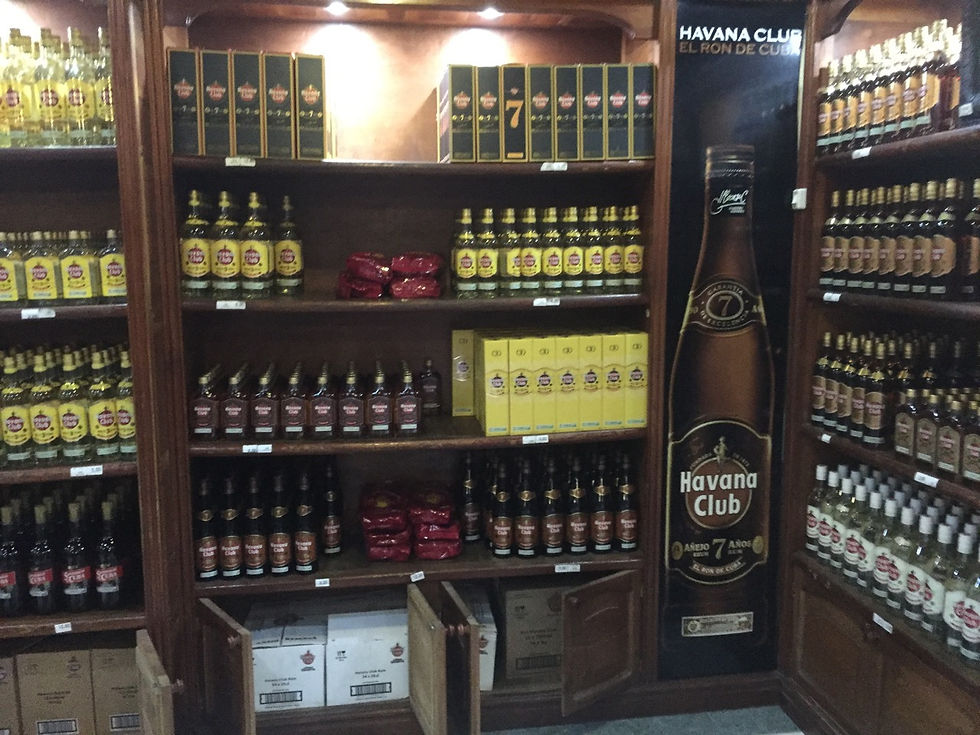
We had the opportunity to buy bottles of rum for $ 1.95 US, but the challenge would have been in shipping them to the ship because we are flying back to the boat tomorrow.
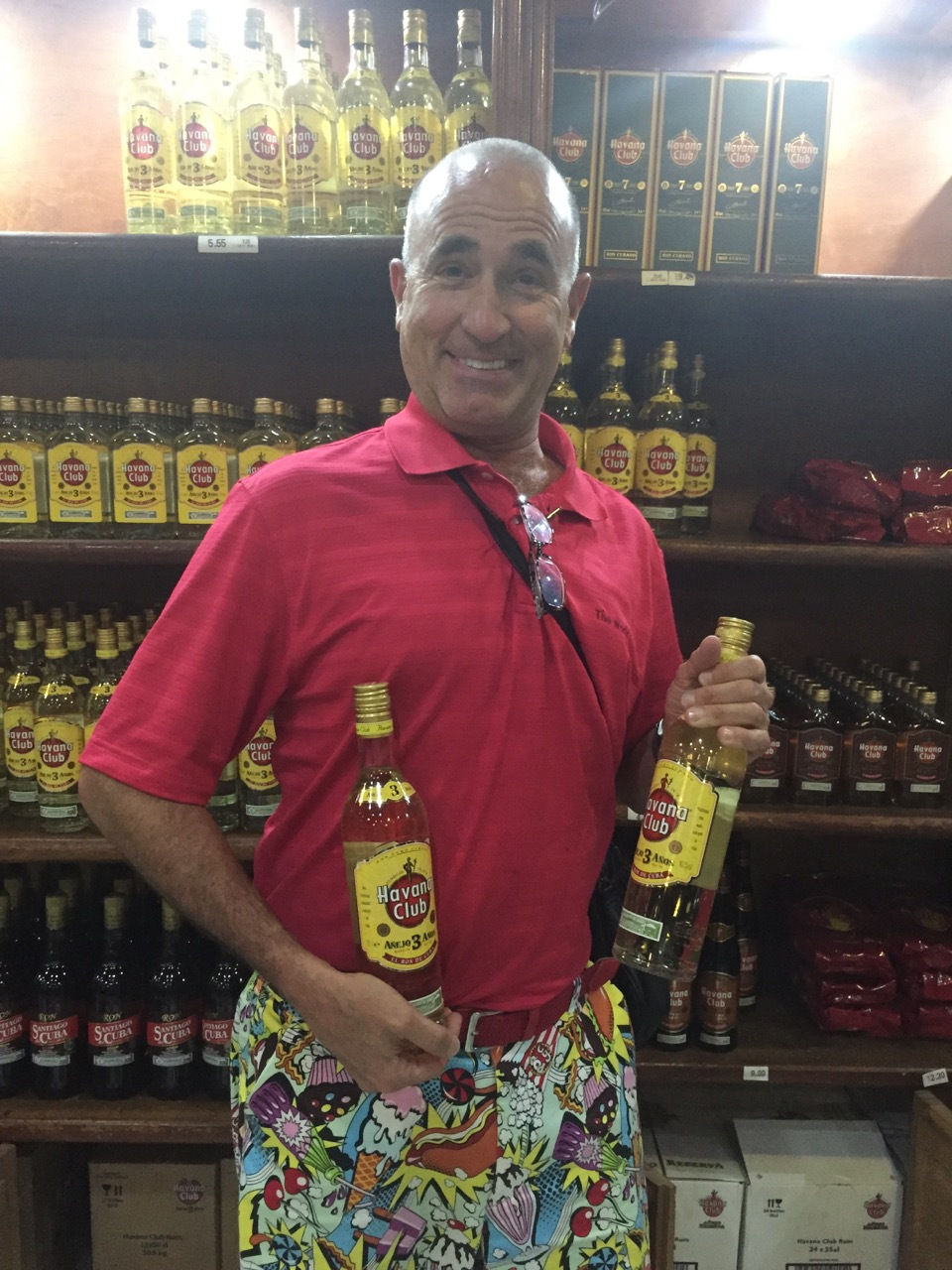
So instead, I just bought a bunch of cigars for my kids to give to their friends as gifts.

Finally, we went into a “craft market,” the same as one would find any other in impoverished city such as Marrakesh, Casablanca, or cities in India. But unlike the markets in those cities, this one was almost immaculate.

Here I bought a few souvenirs.




After we went back to the hotel and had a quick shower and change, we were off to our next event. Same as was the case with the cigar and rum stores, this event was one that we added to the schedule ourselves just today. Baseball in Cuba – at the second largest baseball stadium in the world. It doesn’t get much better than this.
In Cuba, there are 16 teams in the league. Teams are able to reinforce their roster when other teams are eliminated by drafting players from the eliminated teams. Cuba was in the midst of its World Series of baseball so David was able to secure us 10 seats right behind home plate.

Tonight we watched the local team, the Industriales play Matanzas.

The biggest differences between baseball here and baseball in the United States are: (i) the quality of play just isn’t as good; and (ii) the sounds are completely different. Somewhat similar to a college football game, or a soccer game, each team has a band, although I use that word lightly. There are tons of people behind each dugout and when they bang the drums and scream their chants, the noise level surpasses what one would find in any US baseball stadium.


They also have large mascots to dance on top of the dugout throughout the game.


This guy is apparently one of the most recognized shortstops in all of Cuba. He was not playing because his team is been eliminated, but there are some who speculate that he will eventually make his way to the major leagues.

No alcohol is served here and the food is quite odd. Raw popcorn and pulled pork were all that was served.


Because David had convinced the bus driver to wait for us, we were able to get a ride back to civilization and by that, I mean a restaurant, Dina Eutima. It was a nice dinner with much rum and wine flowing. But interestingly, it only came to about $40 US per person.
Once again, we walked back to the hotel. And I must conclude with a word about that. We walked over a mile each way tonight and last night. We walked down alleys and side streets where people were lying on the floor. But we never once thought for a moment about our safety. This is, and feels like, one of the safest cities in the world.



Comments